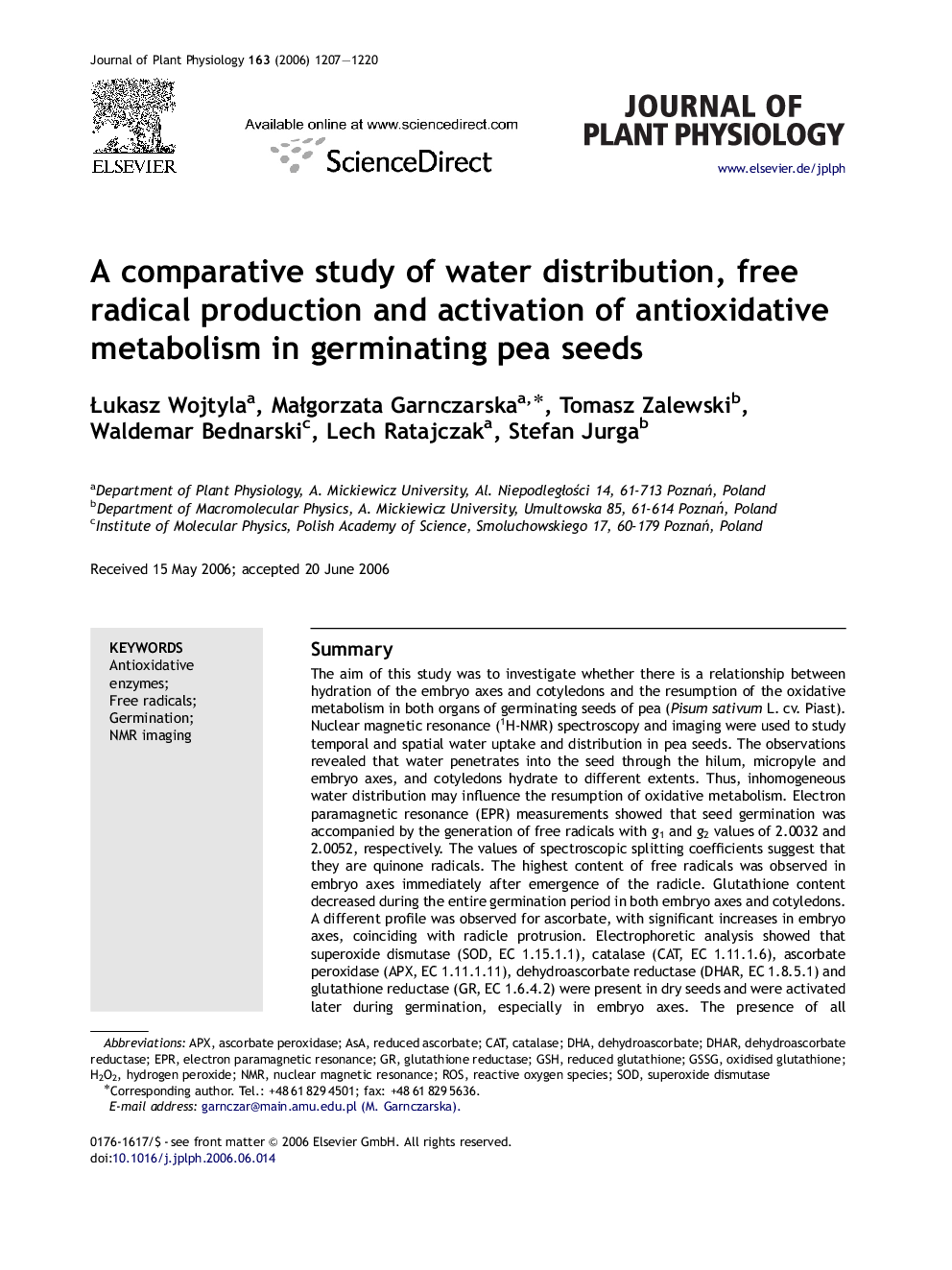| Article ID | Journal | Published Year | Pages | File Type |
|---|---|---|---|---|
| 2057358 | Journal of Plant Physiology | 2006 | 14 Pages |
SummaryThe aim of this study was to investigate whether there is a relationship between hydration of the embryo axes and cotyledons and the resumption of the oxidative metabolism in both organs of germinating seeds of pea (Pisum sativum L. cv. Piast). Nuclear magnetic resonance (1H-NMR) spectroscopy and imaging were used to study temporal and spatial water uptake and distribution in pea seeds. The observations revealed that water penetrates into the seed through the hilum, micropyle and embryo axes, and cotyledons hydrate to different extents. Thus, inhomogeneous water distribution may influence the resumption of oxidative metabolism. Electron paramagnetic resonance (EPR) measurements showed that seed germination was accompanied by the generation of free radicals with g1 and g2 values of 2.0032 and 2.0052, respectively. The values of spectroscopic splitting coefficients suggest that they are quinone radicals. The highest content of free radicals was observed in embryo axes immediately after emergence of the radicle. Glutathione content decreased during the entire germination period in both embryo axes and cotyledons. A different profile was observed for ascorbate, with significant increases in embryo axes, coinciding with radicle protrusion. Electrophoretic analysis showed that superoxide dismutase (SOD, EC 1.15.1.1), catalase (CAT, EC 1.11.1.6), ascorbate peroxidase (APX, EC 1.11.1.11), dehydroascorbate reductase (DHAR, EC 1.8.5.1) and glutathione reductase (GR, EC 1.6.4.2) were present in dry seeds and were activated later during germination, especially in embryo axes. The presence of all antioxidative enzymes as well as low molecular antioxidants in dry seeds allowed the antioxidative machinery to be active as soon as the enzymes were reactivated by seed imbibition. The observed changes in free radical levels, antioxidant contents and enzymatic activities in embryo axes and cotyledons appear to be more closely related to metabolic and developmental processes associated with preparation for germination, and do not correspond directly to the hydration of the tissues.
